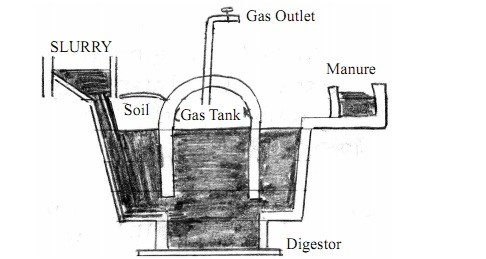
Fossil Fuels
Fuels developed from the fossils. e.g. Coal & Petroleum.
- Formed over millions of years ago have only limited reserves
- These are non-renewable source of energy
- India has about 6% share in the world reserved coal, that may last 250 years more at the present rate of consumption.
Disadvantages of Burning Fossil Fuels
- Released oxides of Carbon, Nitrogen, Sulphur (acidic in nature) cause Air pollution & Acid rain & green-house effect.
Hydro-power Plants
Hydro-power Plants convert the potential energy of falling water into Electricity since there are few water-falls which could be caused as a source of potential energy, hence this is the reason, a large number of dams are built all over the world. Around 25% of our country’s energy requirement is met by Hydro Power Plants

Dams are constructed to
- Prevent flooding of river
- provide water for irrigation &
- to generate hydroelectricity.
Disadvantages of construction of Big Dams
- Submerging/Loss of large variety of Flora fauna and human settlements& rotting of submerged vegetation release green house gas (CH4).
- They pose dangers of earthquakes, landslides etc.
Bio-gas
Bio-gas is an excellent fuel & contains 75% of Methane (CH4 ). It burns without smoke, leaves no residues like ash, with high heat capacity.
Bio-gas is produced by anaerobic decomposition of the slurry (cow dung + water mixture) by microbes. This process is applied in a Bio gas plant.

- The Bio-gas is stored in the gas tank from which they are drawn through pipes for use in a Bio-gas plant
- Bio gas is used for lighting, cooking in the rural areas. While the slurry left behind is used as excellent manure, rich in nitrogen and phosphorous
- The large-scale use of Bio-wastes & sewage material provide a safe and efficient method of waste-disposal besides supplying energy and manure.
Wind Energy
- Unequal heating of the landmass and water bodies by solar radiation generates air movement & causes winds to blow. This kinetic energy of the wind can be used to do work.
- This energy is utilized to lift water from the well & to generate electricity in the wind mill.
- Actually, the rotatory motion of the windmill is used to turn the rotor of the turbine which then generate electricity through Dynamo.
- The output of a single windmill is quite small so a number of windmills are erected over a large area – called wind energy farm.
- India Ranked Fifth in the world in harnessing wind energy for the production of electricity. It is estimated that nearly 45,000 MW of electric power can be generated if India’s wind potential is fully exploited.
- The minimum wind speed for wind mill to serve as a source of energy is 20 KMPH.
Advantages of Wind Energy
- Eco friendly
- Efficient source of renewable energy.
- No recurring expenses for production of electricity
Limitations of Wind Energy
- Wind energy farms need large area of land
- Difficulty in getting regular wind speed of 15-20 Km PH.
- Initial cost of establishing wind energy farm is very high.
- High level of maintenance of blades of wind mill.
Improvements in the Technology for using Conventional sources of energy
- Biomass is Agricultural & animal wastes that can be used as a fuel. E.g. of Biomass – Firewood, cattle dung, sewage, dry leaves, stems.
- Normally biomass has low calorific value & produce lot of smoke when they are burnt. Their efficiency as a good fuel has been increased tremendously with the application of technology. For e.g. cow dung becomes efficient & cheap good fuel in a Bio-gas plant.
- Charcoal is better fuel than wood because it does not contain water & other volatile material which are present in wood.
- Charcoal burns without smoke, flames & has high calorific value.

